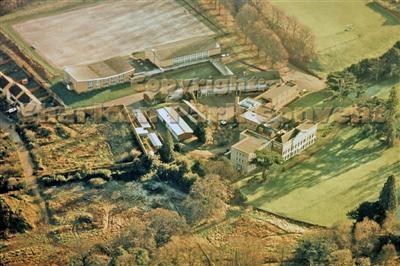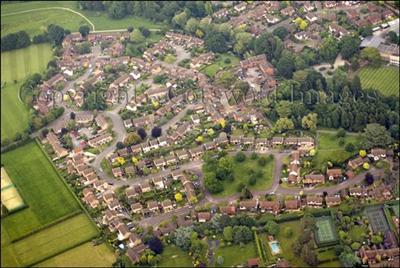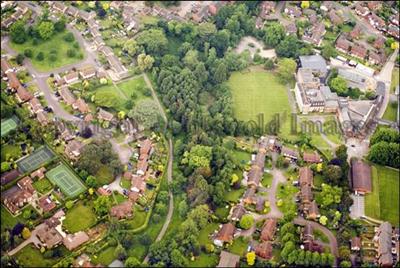The next chapter in the life of the old mansion found her preserved behind the same impressive westerly façade, but with a cluster of modern scholastic buildings attached to and standing nearby. The sale from Brassey to Reeves in 1922 no doubt mirrored a similar trend elsewhere, as more and more of Cheltenham's finer houses relinquished the traditional family ownership of yesteryear, adopting various 'modern' post-war roles after private owners, servants and ancillary staff slipped quietly away - or failed to return from the Great War. The next big makeover for Charlton Park saw the former mansion hosting the staff and pupils of two catholic educational establishments - from 1935 as Charlton Park Convent and from 1987 as St Edward's School - the current occupiers of the versatile old dame, both allowing her to repose within a modern, if slightly noisier scholastic semi-retirement, whilst still sitting proudly upon her own well tended turf.
 Charlton Park Convent before the Convent's 1960 block was added to the left side of the mansion
Charlton Park Convent before the Convent's 1960 block was added to the left side of the mansion
 Charlton Park Convent with the old kitchen garden area to the left; which became Chancel Park in the 1980s
Charlton Park Convent with the old kitchen garden area to the left; which became Chancel Park in the 1980s
 2008 - St Edward's School top right, Charlton Park Gate lower edge, Charlton Park in the centre.
2008 - St Edward's School top right, Charlton Park Gate lower edge, Charlton Park in the centre.
Cox's Meadow is upper left, Reeves Fields below and East Glos Club lower left
 2008 - The Lilley Brook runs through the central band of trees towards the top. St Edwards School is centre right
2008 - The Lilley Brook runs through the central band of trees towards the top. St Edwards School is centre right
with Chancel Park above it and Moorend Glade below. Charlton Park & Charlton Park Gate left of centre.
We may now safely conclude that the various owners and tenants of Charlton Park were people enjoying significant wealth and influence. In centuries past they included wool merchants, antiquarians, entrepreneurs, railway magnates, parliamentarians, lawyers and gentleman farmers. Those who could afford it embarked on occasional building and re-building projects, the magnitude of which indicates that house rightly fell into the category of 'mansion'. The house has of course evolved and been substantially re-shaped over time, particularly by the likes of Giles Greville who greatly improved things between 1562-8, the Prinn family in the 18th century and Albert Brassey in the 1870s
